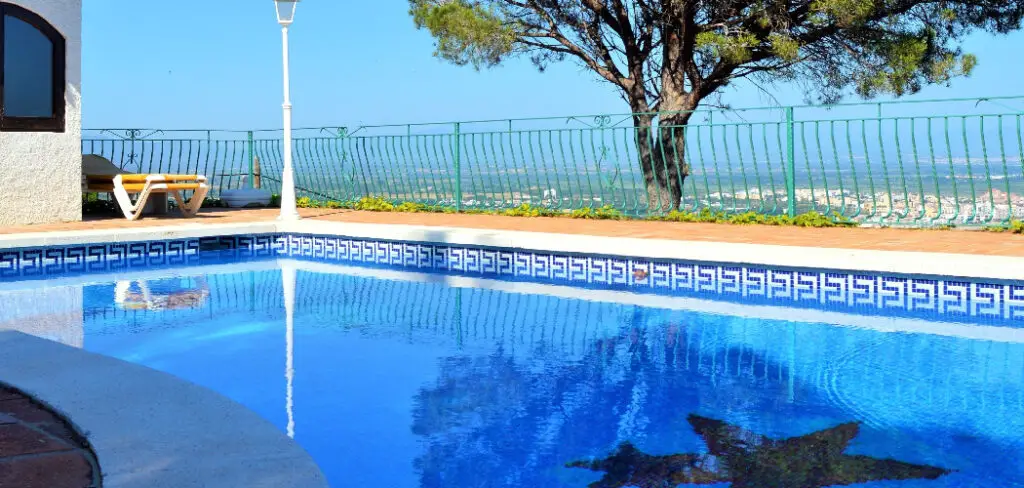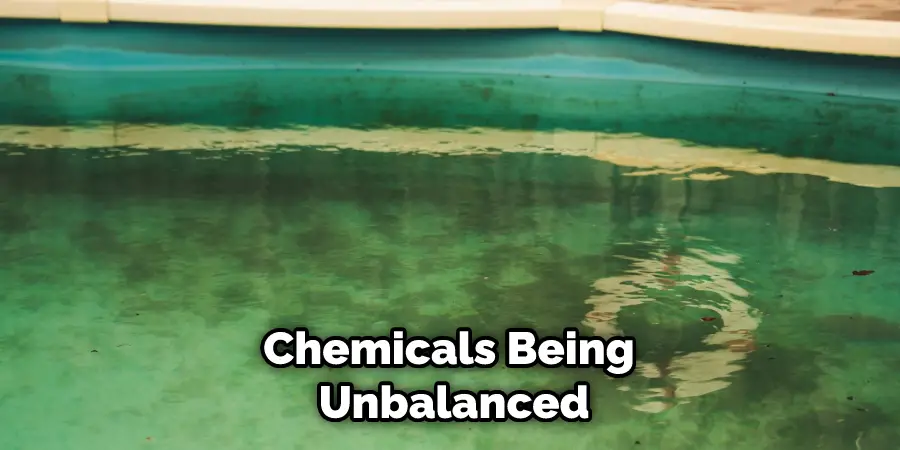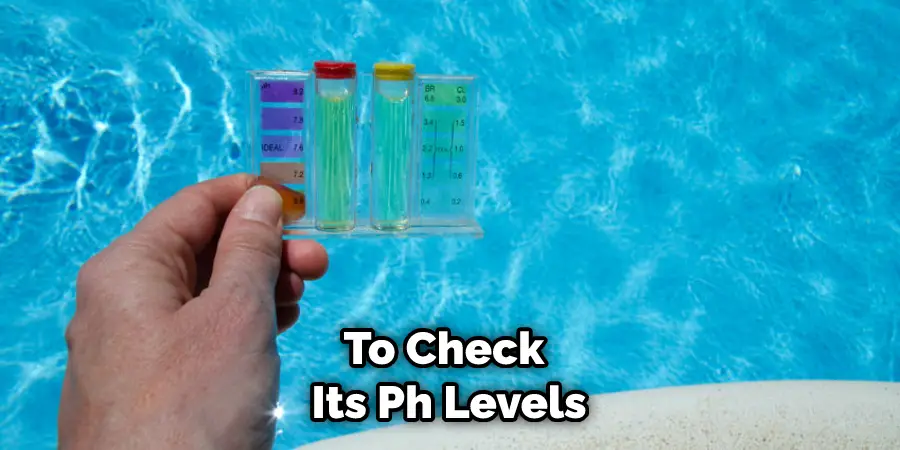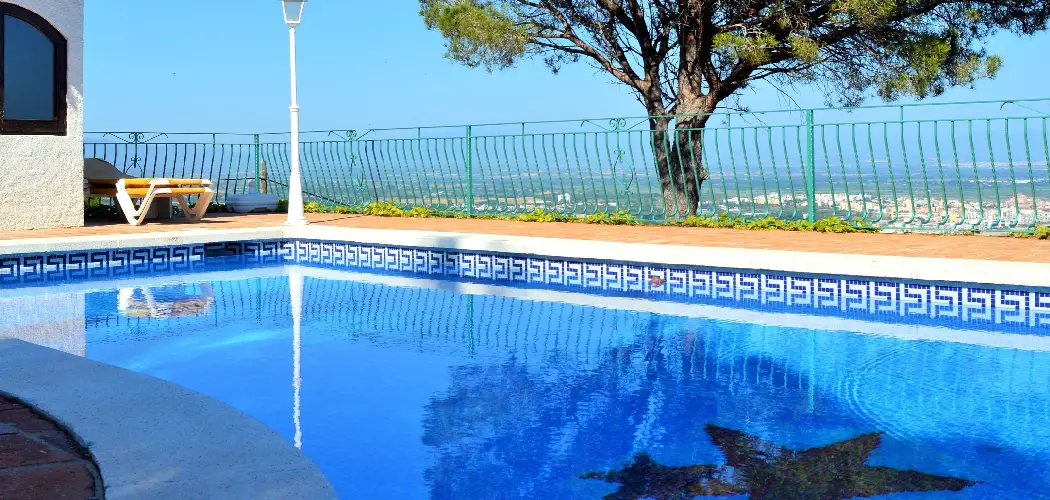
Is your swimming pool water looking a bit murky and uninviting? You might have the unfortunate experience of dealing with brown pool water. It’s not just an eyesore; this type of water can also contain harmful bacteria that can cause health problems for swimmers. While you may be feeling frustration and despair, don’t worry!
This blog post will provide you with advice on how to fix brown pool water so that you can enjoy your swim time safely and without having to worry about contaminants in the water. Read on as we cover tips for identifying the problem causing it and instructions on getting rid of it.
Don’t let cloudy, murky waters prevent you from leisurely days spent by the pool: Fixing Brown Pool Water is easier than you think!
Can You Fix the Brown Pool Water?
It seems daunting, but fixing brown pool water is not so difficult – once you know how! Chances are, the discoloration is caused by iron oxide, debris from decaying plants and pesticides, or chemicals being unbalanced.

So the first step towards restoring your pool to its original crystal-clear glory is to get your water tested – this will tell you exactly what needs to be done.
Depending on the test results, you could use a clarifier to remove particles and dissolved contaminants, shock the pool with chlorine to kill bacteria and restore pH levels or adjust the calcium hardness in hard water areas. But however bad it looks now, with some patience and elbow grease, you can have it sparkling again in no time.
Why Should You Fix Brown Pool Water?
It may not just be an eyesore if you have brown and cloudy pool water. In addition to looking unpleasant, brown pool water can also pose health risks for swimmers. It can contain bacteria such as E. coli and fecal coliforms, which can cause skin infections and other illnesses if swallowed.
It is, therefore, crucial that homeowners take the initiative to remedy their brown-colored pool water in order to ensure the safety of their family and friends. Regularly checking your pH levels and chlorinating your pool are two easy ways to ensure they keep their pool’s water clear and safe to swim in.
7 Steps to Follow on How to Fix Brown Pool Water
Step 1: Clean the Filters and Pump Basket
The first step is to clean the filters and pump basket. To do this, turn off all power to the filter and pump system, then open up the filter lid. Remove any debris that may be blocking the filter grids or clogging up the pump basket. Once everything has been cleared, close up the lid and turn on the power again.
Step 2: Add Shock Treatment
Shock treatment is an important step in getting rid of brown pool water. It helps remove organic contaminants and break down chloramines (chemical compounds formed when chlorine interacts with other organic materials).
For best results, use a non-chlorine shock treatment like calcium hypochlorite or potassium monopersulfate. Follow all product instructions for dosage amounts and timing.
Step 3: Run Your Filter System Continuously
The next step is to run your filter system continuously until the water returns to its normal color—usually 24 hours or more. During this time, make sure to test your water regularly to check its pH levels; if they become too high or low, adjust accordingly using pH increaser/decreaser products.

You may also want to add algaecide during this time for extra protection against algae growth.
Step 4: Check Your Filter System
Once the water has returned to its normal hue and your pH levels are balanced, it’s time to inspect your filter system once again. Make sure there are no clogs or blockages that could be impeding filtration efficiency. If any problems are found, address them right away.
Step 5: Vacuum Your Pool
You may need to vacuum your pool to remove any dead organic material that is still present in the water. If you’re using a suction-type vacuum, make sure to follow all manufacturer instructions and never let it run longer than 25 minutes at a time.
Step 6: Balance Your Water Chemistry
The final step is to check and adjust the chemical balance of your pool water. Make sure all levels are within the ideal range for comfortable swimming: pH 7.2-7.8, free chlorine 1-3 ppm, total alkalinity 80-120 ppm, calcium hardness 200-400 ppm, and cyanuric acid 30-50 ppm. You can use test strips or a digital pool water tester to measure these levels.
Step 7: Monitor Your Pool Water Regularly
The only way to ensure your brown pool water never returns is by monitoring it on a regular basis. Test the pH, chlorine levels, and other parameters weekly and make any adjustments as needed.
It’s also important to keep up with your filter and pump maintenance and regular vacuuming and shock treatments.

Doing so will ensure your pool stays sparkling clean all season long!
That’s it! You’ve now learned the seven steps to follow on how to fix brown pool water. Properly maintaining your pool is the best way to avoid this situation, but if it does happen, following these steps will help get you back in the swim of things quickly and safely.
Things You Need to Know Before Fixing Brown Pool Water
Maintaining a crystal clear pool can be hard work, and knowing what to do when the water turns brown can be daunting. When it comes to fixing brown pool water, the most important thing to know is that there are several different potential causes.
It could be caused by rain or particles carried in by the wind, organic matter like plants and leaves, or poor maintenance practices such as insufficient sanitizer. Each of these causes will require different treatments and must be identified to restore your pool to its former glory.
Therefore, it is crucial that you assess the situation carefully and enlist professional help if necessary since trying random fixes without knowing what’s causing the problem may worsen it even further. With the right diagnosis and treatment strategy, you should have crystal clear water again in no time!
Benefits of Fixing Brown Pool Water
Fixing brown pool water has many advantages. Firstly, the pool is much more aesthetically pleasing to look at once the water has been restored to its clear natural color.
This can improve your enjoyment of the pool and make it a better place for swimming, family moments, or simply relaxation.
Additionally, having a clean and healthy pool is invaluable, as you know that all contaminants have been eliminated. Besides this, chlorine will be more effective in a clean pool than if it were dealing with deposits of dirt and grime, which cause cloudy and brown water.
Lastly, when all these benefits are considered together, it becomes clear why many people prefer to fix their brown pools rather than ignore the issue and allow their pool environment to be compromised.

6 Common Mistakes People Make When Trying to Fixing Brown Pool Water
1. Not Shocking the Pool Often Enough
You should be shocking your pool once a week if you live in an area with high calcium hardness levels. If you live in an area with low calcium hardness levels, you can get away with shocking your pool every other week. Shocking your pool helps to kill bacteria and algae that can cause brown water.
2. Not Vacuuming the Pool Regularly
You should vacuum your pool at least once a week to remove dirt, debris, and leaves that can cause brown water. If you have a lot of trees in your yard, you may need to vacuum your pool more frequently.
3. Using the Wrong Type of Filter
If you use a sand or cartridge filter, you may want to switch to diatomaceous earth (D.E.) filter. D.E. filters are more effective at removing small particles from the water, which can help to reduce brown water.
4. Not Cleaning the Pool Deck
Your pool deck can be a breeding ground for bacteria and algae that can cause brown water. Be sure to sweep and hose down your pool deck on a regular basis to keep it clean.
5. Using Too Much Chlorine
Using too much chlorine in your pool can also cause brown water. Chlorine is a powerful chemical that can kill bacteria and algae but can also cause problems if used in excess. If you find that your pool water is consistently brown, you may want to reduce the amount of chlorine you are using.
6. Not Testing the Water Regularly
Testing your pool water on a regular basis is essential for keeping it clean and clear. Test kits are available at most hardware stores or online. Be sure to test for pH, alkalinity, and chlorine levels on a weekly basis.
Conclusion
While it might seem daunting at first, fixing brown pool water isn’t so hard after all! By following these three steps—cleaning the filters and pump basket, adding shock treatment, and running your filter system continuously—you’ll get your pool back into sparkling condition in no time!
So don’t worry about those unsightly brown hues—follow our simple guide for crystal-clear waters again soon! Thanks for reading our post about how to fix brown pool water.
You Can Check It Out to Fill Pool with Well Water
About
Outdoor Fixes is a distinguished figure in the world of Diy design, with a decade of expertise creating innovative and sustainable Diy solutions.
His professional focus lies in merging traditional craftsmanship with modern manufacturing techniques,
fostering designs that are both practical and environmentally conscious. As the author of diy,
outdoorfixes delves into the art and science of outdoorfixes-making, inspiring artisans and industry professionals alike.
Education RMIT University
(Melbourne, Australia) Associate Degree in Design (Outdoor Fixes) Focus on sustainable design, industry-driven projects,
and practical craftsmanship. Gained hands-on experience with traditional and digital manufacturing tools, such as CAD and CNC software.
Nottingham Trent University
(United Kingdom) Bachelor’s in outdoorfixes.com and Product Design (Honors) Specialized in product design with a focus on blending creativity with production
techniques. Participated in industry projects, working with companies like John Lewis and Vitsoe to gain real-world insights.
Publications and Impact
In diy, Outdoor Fixes his insights on indoor design processes, materials, and strategies for efficient production.
His writing bridges the gap between artisan knowledge and modern industry needs, making it a must-read for both budding designers and seasoned professionals.

